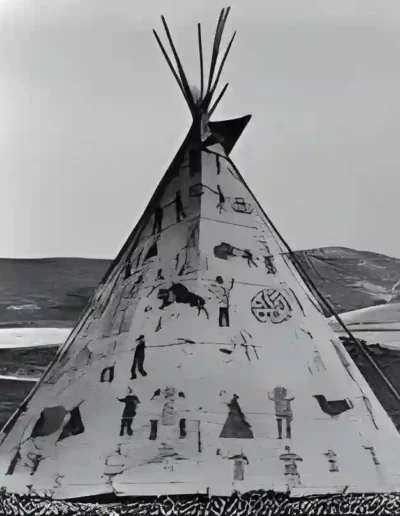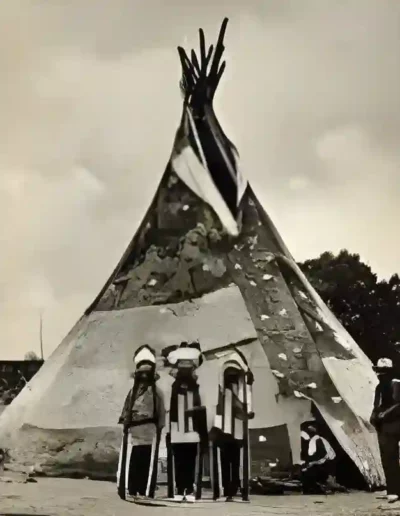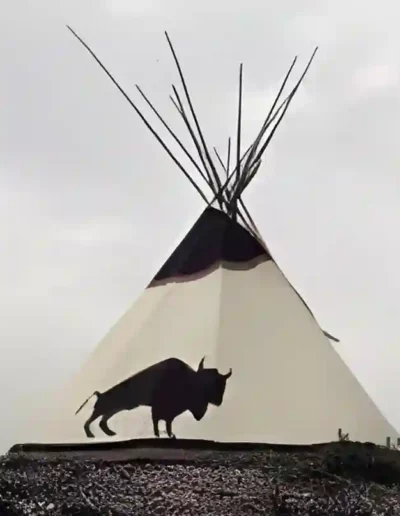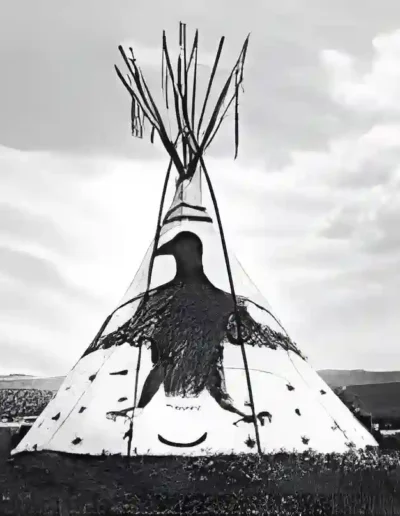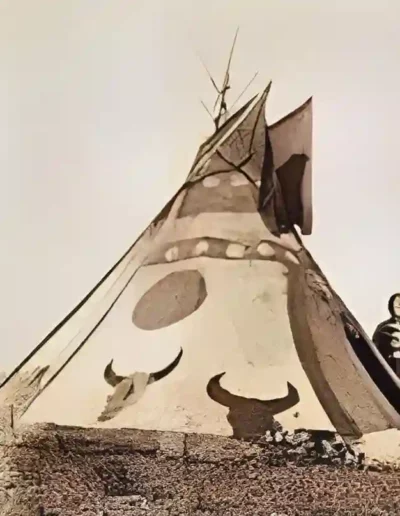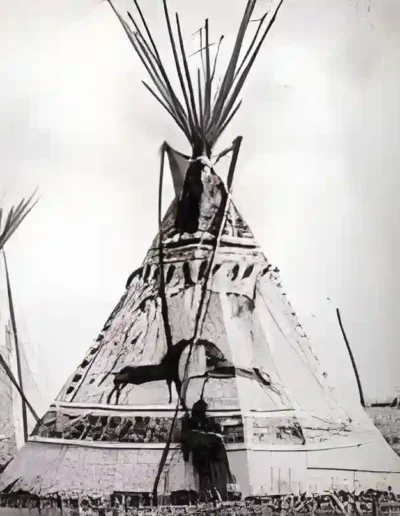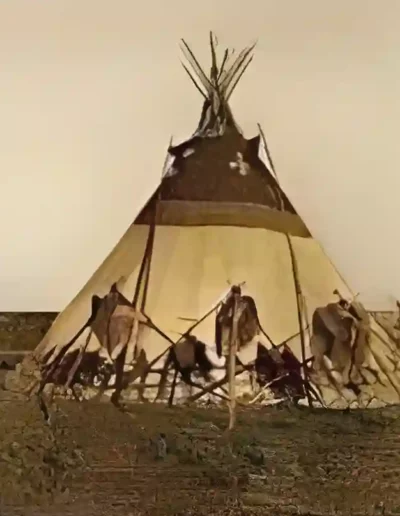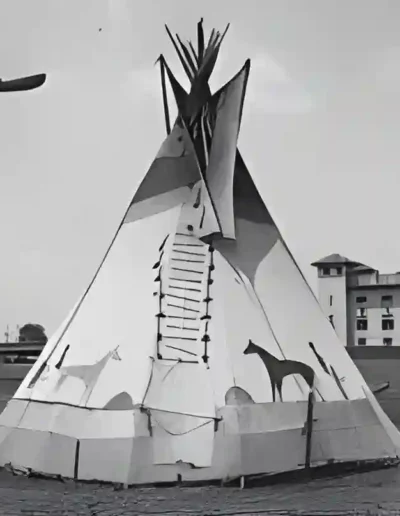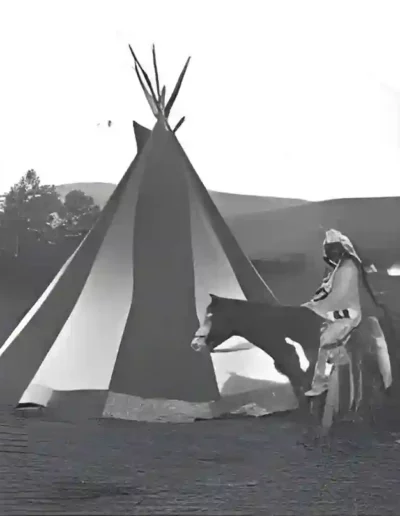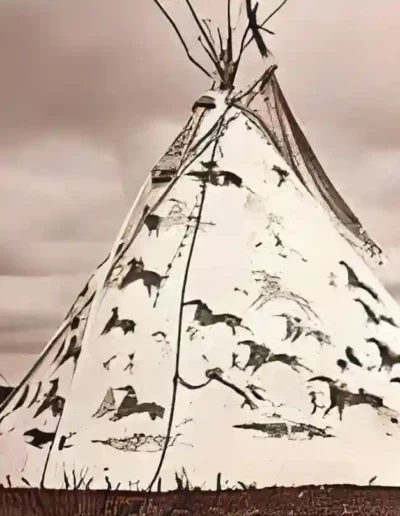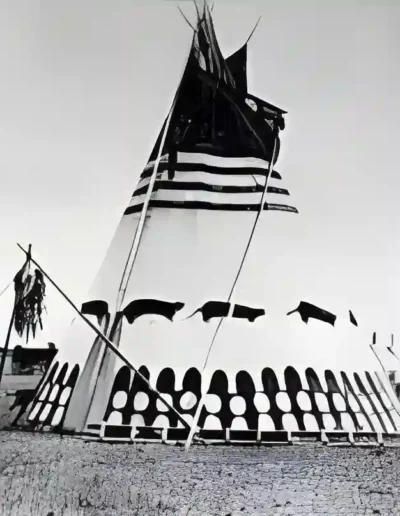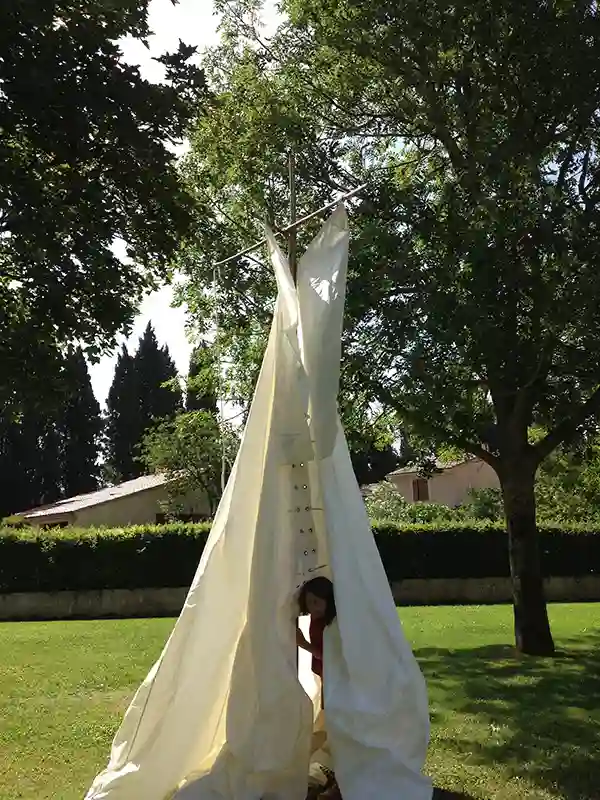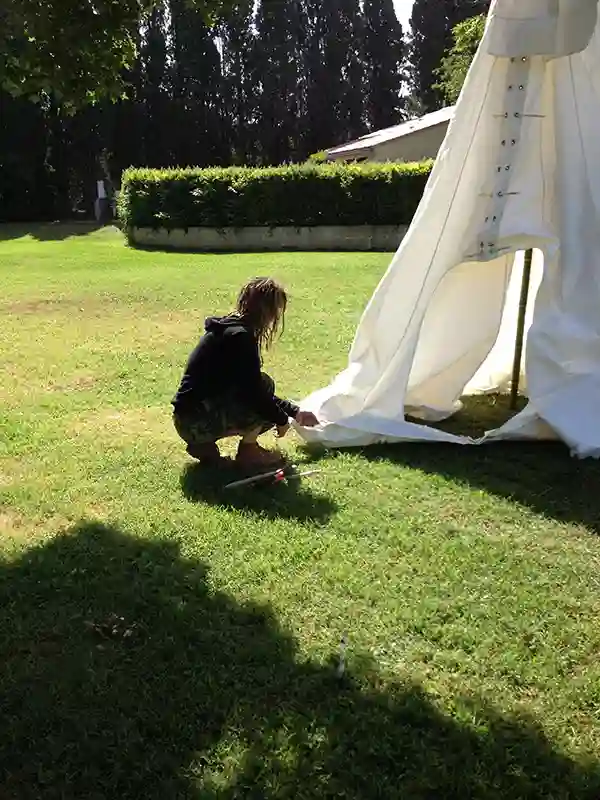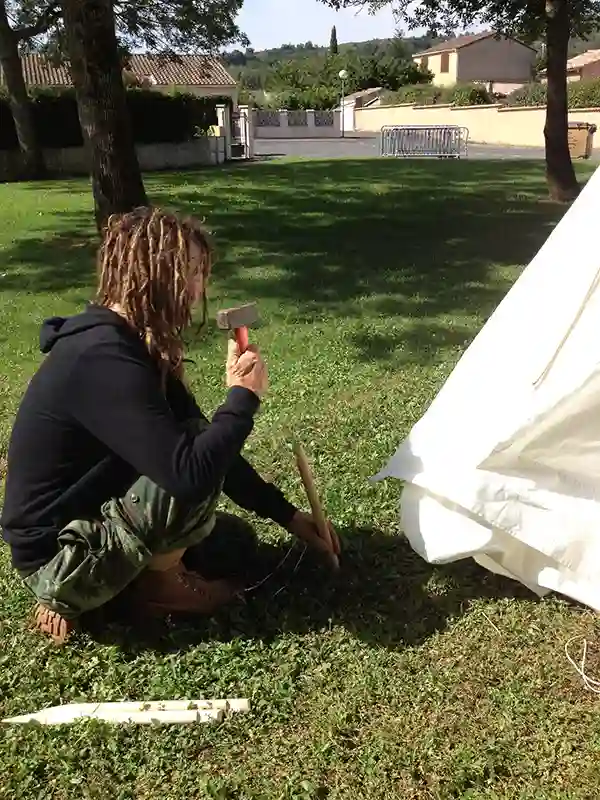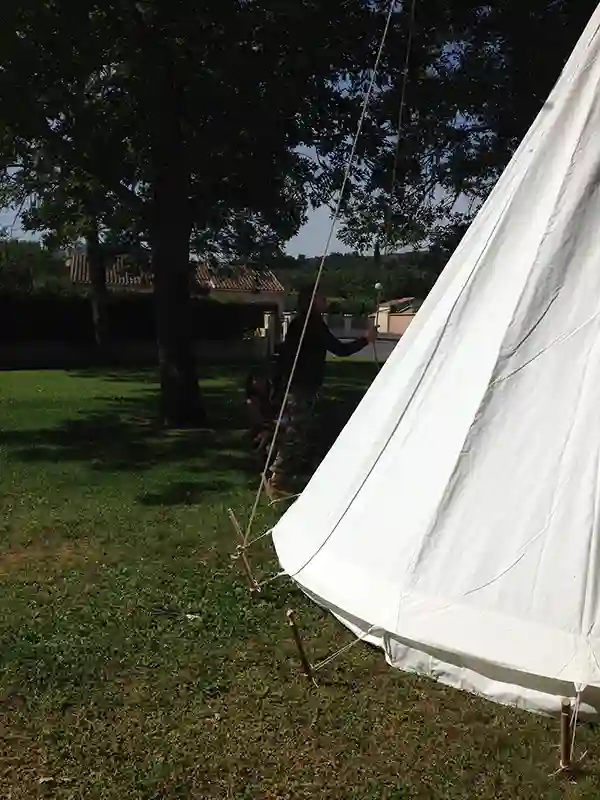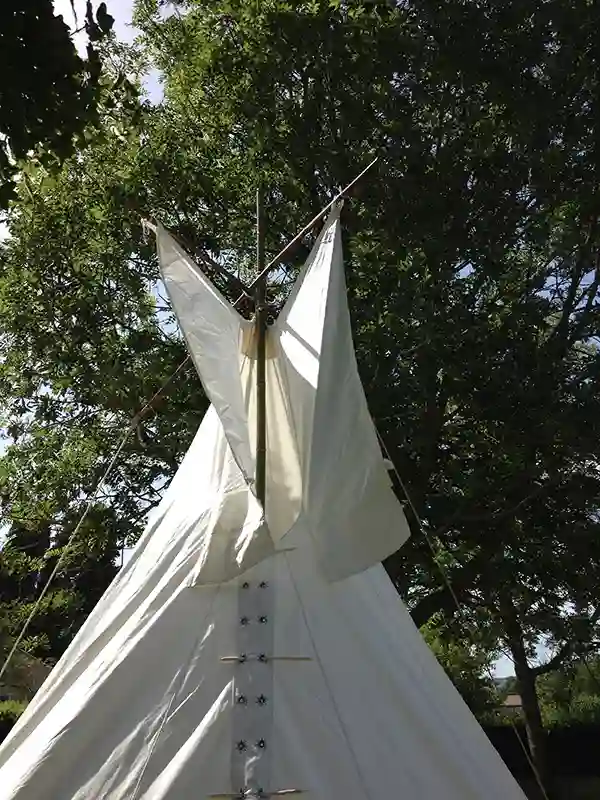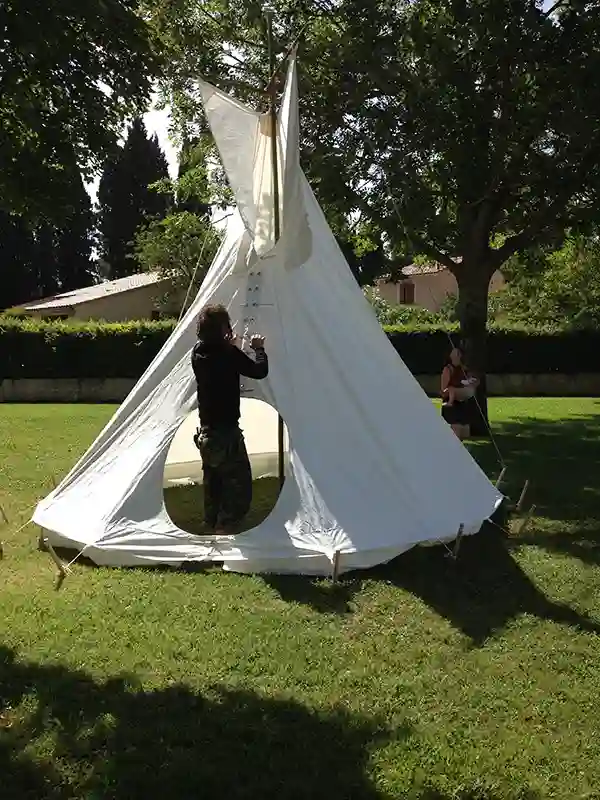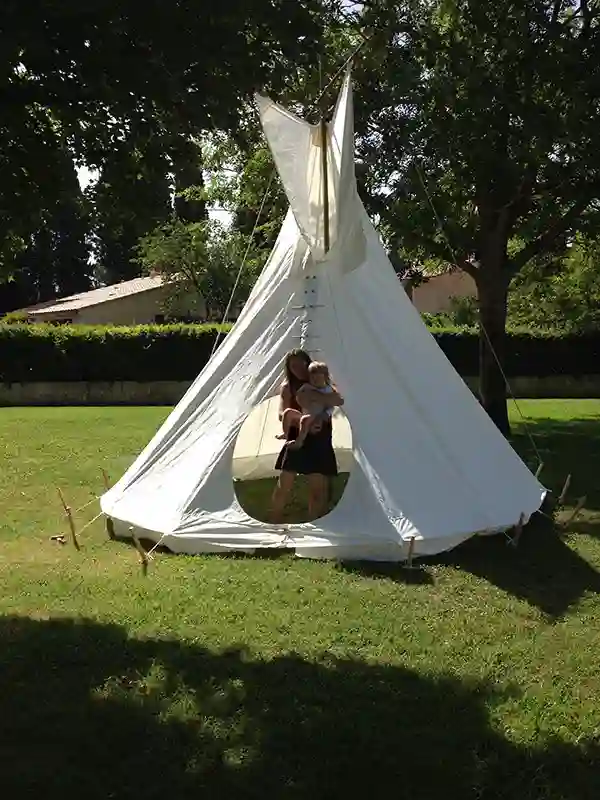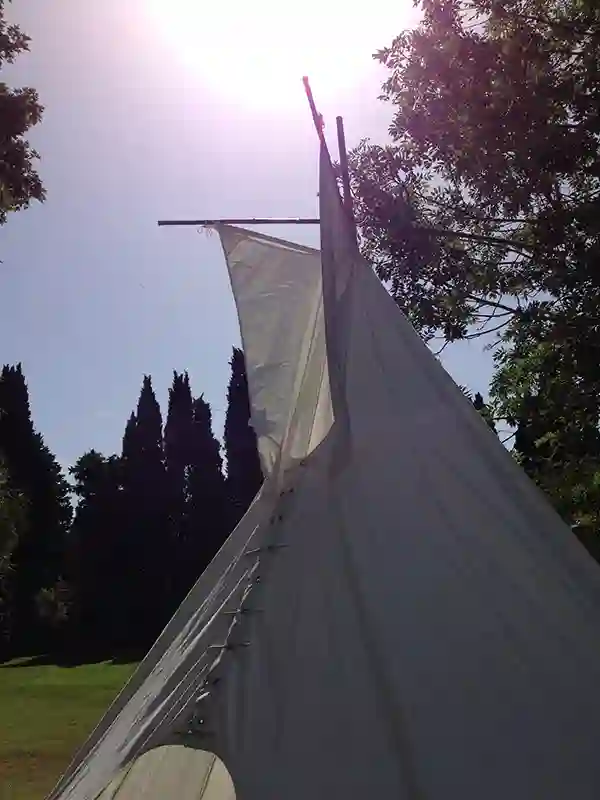Tipis
A traditional and sacred habitat
The tipi, a word meaning ‘used for living in’ in Siouan (Sioux-Catawba language), is a conical tent, emblematic of the civilisations of the North American plains.
This form of dwelling, still widespread before the 17th century and continuing to this day, continues to inspire diverse audiences around the world.
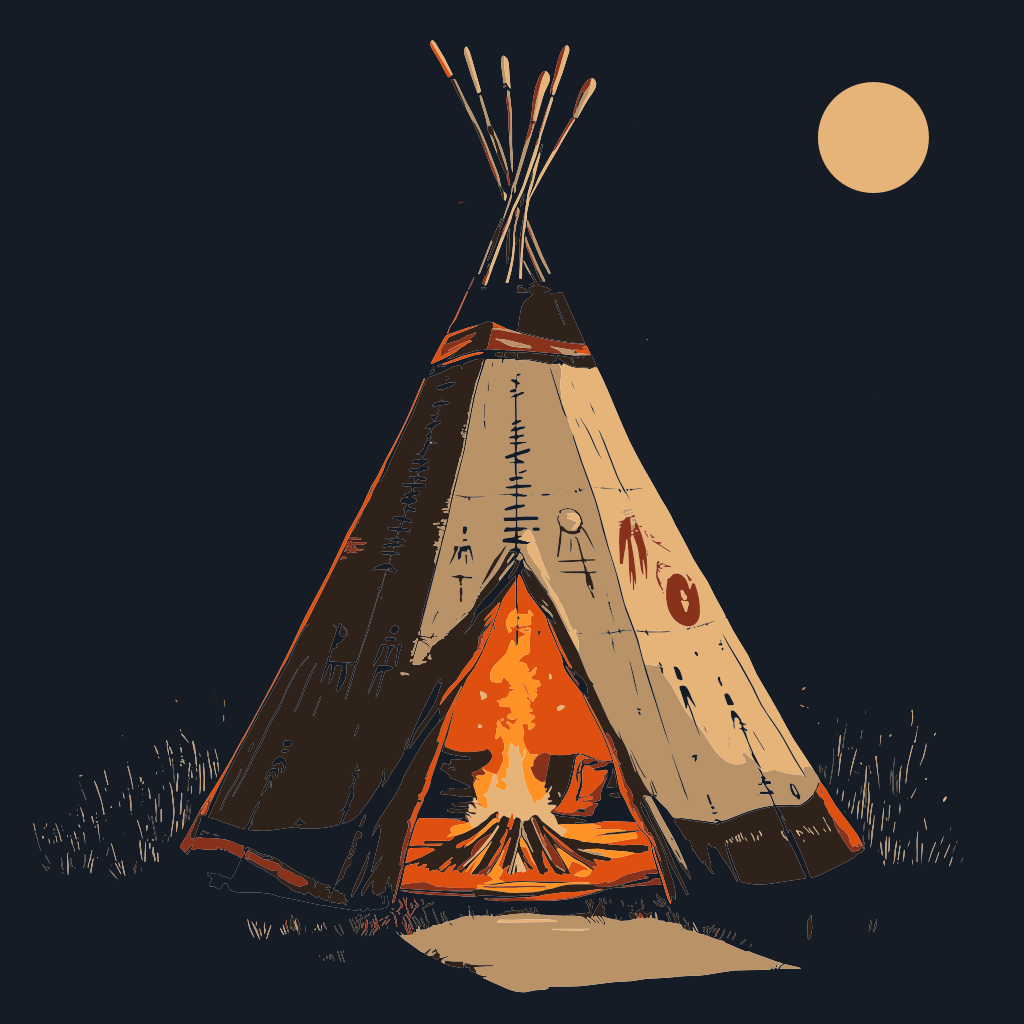
History and Symbolism
or the Art of Living in a Tipi
Origin and Use
The teepee, the nomadic dwelling par excellence, was used by the native tribes of the plains to set up camp during their wanderings and also as semi-sedentary housing during the long winter months.
In addition to its undeniable practical qualities, this exceptional dwelling also had a sacred character, symbolising the link between man and the magic of the universe.
Modern Use
Nowadays, teepees are mainly used in hospitality structures, such as unusual lodgings, holiday centres or for historical reconstructions, but also by people who want to experience a ‘return to nature’, seeking a simple life, immersed in nature and in direct contact with the elements.
In short, the teepee is a traditional dwelling that offers comfort and protection while respecting ancestral construction methods.
Design of our Tipis
We offer two types of Tipis
Native American Tipi
With its dozen* poles, this traditional model is faithful to the heritage of the Plains peoples, such as the Sioux, Cheyenne, and Crow. Our tipis are enhanced with modern finishes for increased reliability, adapted to our lifestyle and climates.
* In fact, there are 10 to 20 poles depending on the diameter (see table below).
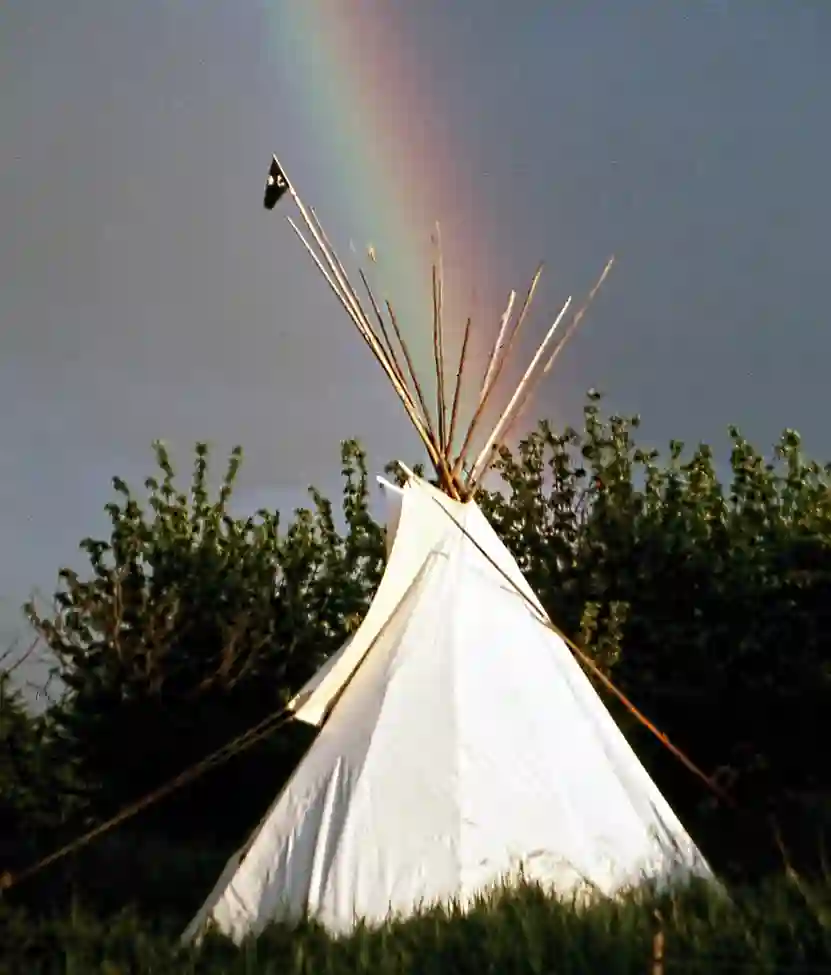
Suspended Tipi
This innovative model is based on a single central pole, offering a different structure while retaining the traditional spirit of the tipi.
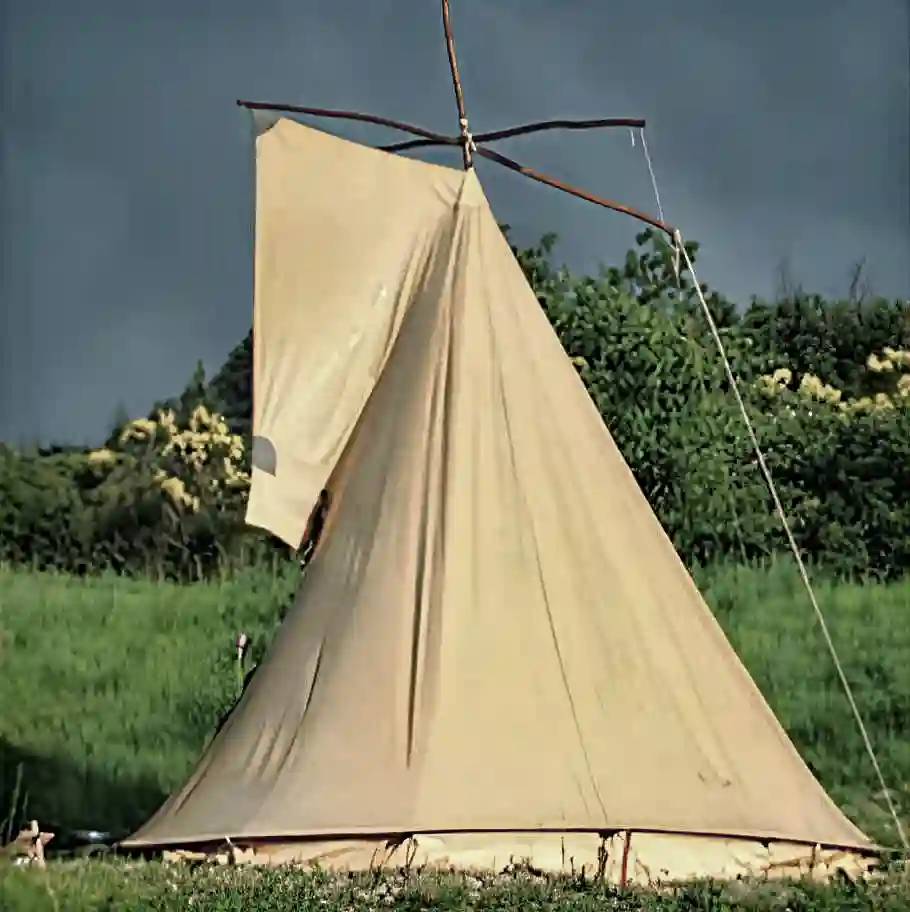
Native American Tipis
With their canvas stretched over a frame of poles, these traditional models remain faithful to the heritage of the Plains Indians. The models made in our workshops are based on a design commonly known as the ‘Sioux Tipi’, meaning that their base is not perfectly circular but slightly oval, offset towards the front.
This layout not only provides additional space inside near the entrance, generally used for storing wood, but also facilitates the evacuation of smoke, as the slit acting as a chimney is more vertical to the hearth.
Our tipis are enhanced with modern finishes to increase their reliability, particularly through the materials used, such as the canvas, the sewing threads and the presence of attachment straps that allow for secure anchoring to the ground.
Depending on the size of the teepee chosen, there are approximately 10 to 20 poles ranging from 4m to 11m in length to ensure perfect tension of the canvas.
Due to transport costs, we do not supply the poles; they must therefore be purchased locally.
Technical specifications
Diameters from 3m to 9m.
Lining’ suspended around the perimeter at a height of around 1.7m. This lining cuts out draughts and facilitates smoke evacuation; it is essential.
‘Ozan’ or ‘Ciel’ is a semi-circular waterproof canvas suspended above the sleeping area to optimise heat retention.
Canvas is made from unbleached white polycotton, in a choice of 360g/m² or 430g/m².
A 560gr/m² 100% cotton canvas cover can be made, available in white, beige or dark green.Please contact us for further information.
Teepee capacity and dimensions
Here is a table summarising the capacities and dimensions of tipis according to their diameter:
| Diameter | Number of reclining places | Number of seats | Number and lenghts of poles |
| 3m | 2 people | 4 people | 7+2* x 4m |
| 4m | 4 to 5 people | 8 to 10 people | 11 x 6m |
| 5m | 6 to 8 people | 15 to 20 people | 14 x 7m |
| 5.5m | 10 to 12 people | 20 to 25 people | 17 x 9m |
| 6m | 12 to15 people | 30 to 35 people | 17 x 10m |
| 7m | 15 to 20 people | 35 to 40 people | 17 x 11m |
| 8m | 20 to 25 people | 40 to 50 people | 20 x 12m |
| 9m | 20 to 30 people | 50 to 55 people | 20 x 12m |
* 7 interior poles + 2 poles for adjusting the “ears” used as deflectors for the smoke outlet
These dimensions and capacities allow you to choose the tipi that best suits your needs, whether for family use or for events requiring the accommodation of a larger number of people.
The Amerindian tipi is a traditional housing solution, offering comfort and protection while respecting ancestral construction methods.
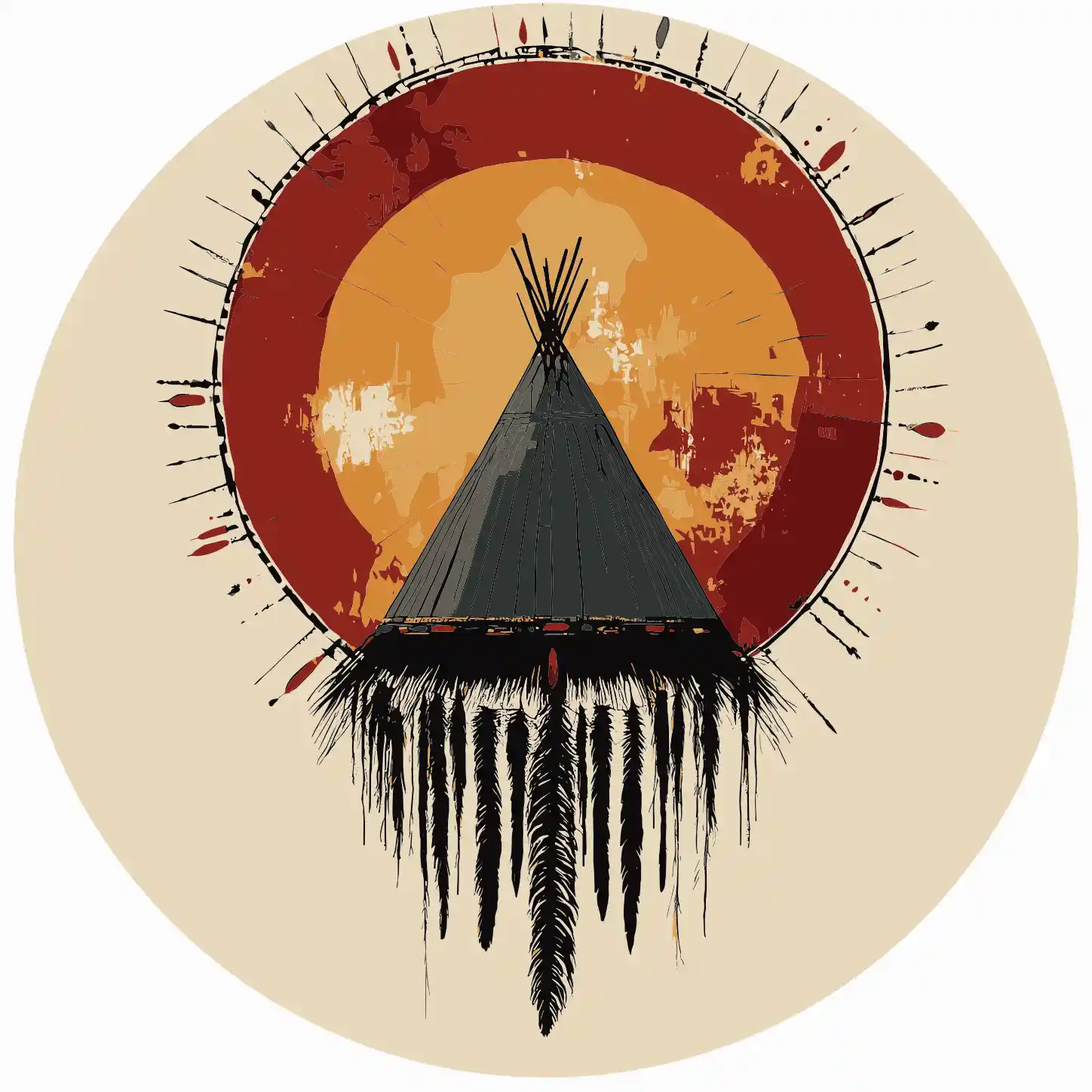
The suspended tepee or “single-pole” tepee
This innovative model offers an alternative to traditional Tipis: instead of requiring a complete set of poles for assembly, it can be assembled with a single central pole.
It differs from traditional Amerindian Tipis by its specific design, consisting of a trapezoidal assembly of canvas triangles, instead of horizontal strips as on Sioux Tipis.
It is precisely this special design that allows it to be erected on a single central pole, like marquees and other pavilion tents.
Thanks to this particular feature, the ‘Single Pole Tipi’ offers unique advantages in terms of transport and assembly.
By using a 300gr/m² canvas, the weight is reduced to just 12kg for a 4m diameter Tipi (i.e. a 12m² floor area).
This type of Tipi is ideally suited to frequent travel during the summer season, outdoor events such as gatherings and festivals, horse-riding or as back-up accommodation during canoe trips etc.
Despite its light weight, the functionality of this type of Tipi is not compromised, and it is still possible to build a fire inside for heating, cooking and lighting.
Technical specifications
- Total weight: 12.5kg
- Diameter: 4m
- Floor area: 12m²
- Sleeping capacity: 6
- Set-up time: approx. 15 minutes.
- Waterproof and rot-proof “2i” canvas, available in :
– 100% cotton in “tea” colour
or in
– unbleached white polycotton canvas (50% polyester/ 50% cotton, 2i ). - Built-in 40cm high lining.
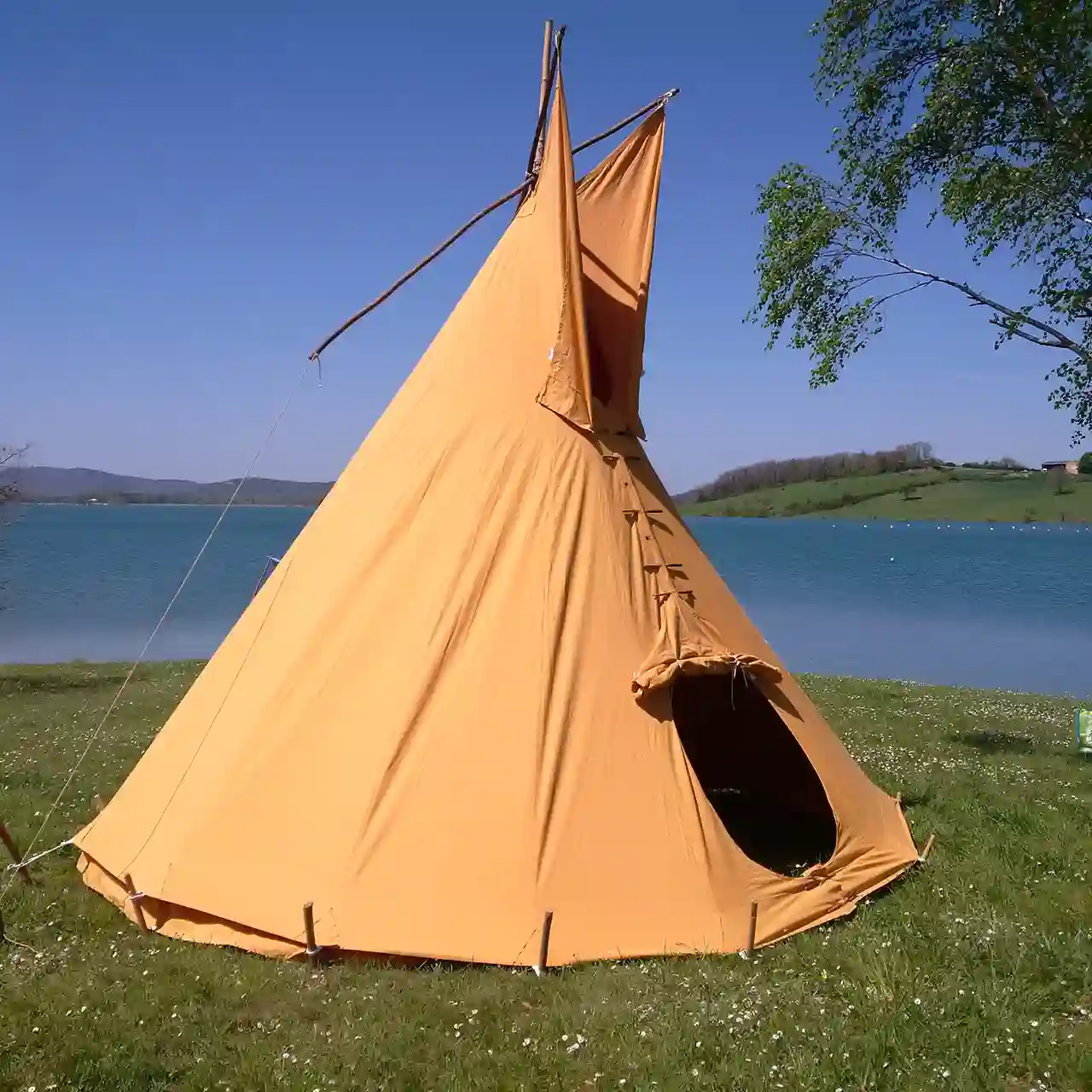
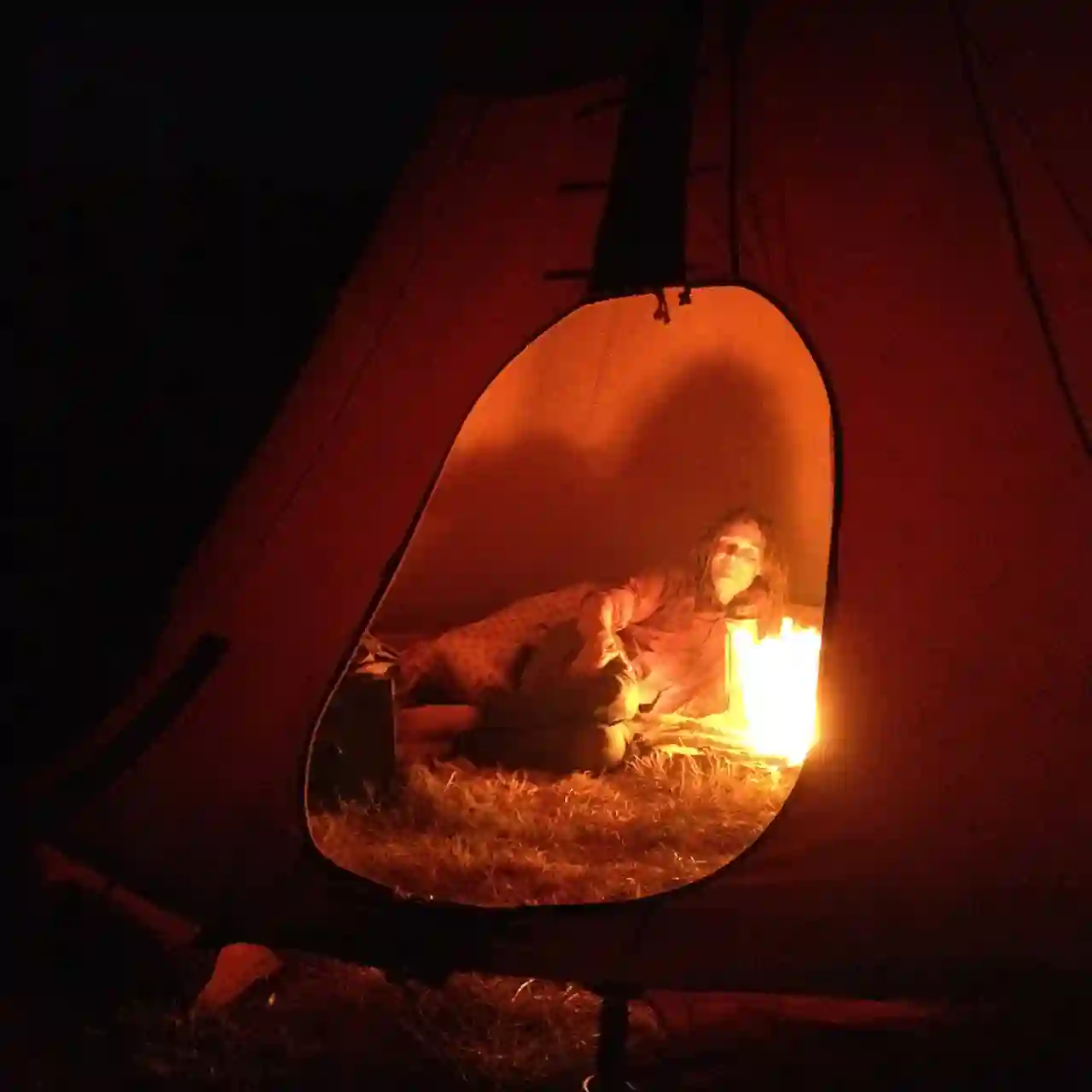
Find out more about the suspended tipi…
The central pole, 4.20m long, only comes into contact with the canvas at the attachment point at the top.
This allows great latitude in the choice of pole. It is even possible to design a pole that can be dismantled into several parts that can be assembled by fitting together, making it even easier to transport the whole unit.
Prices, delivery and ordering
The 2025 price for a hanging tipi is €1350 inc. This price does not include the pole, which must be purchased locally.
There is an additional charge of around €50 for delivery by post, including insurance.
Production takes 4 to 6 weeks.
To place an order, please contact us using one of the methods available on our contact page.


